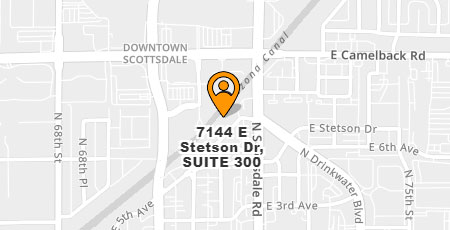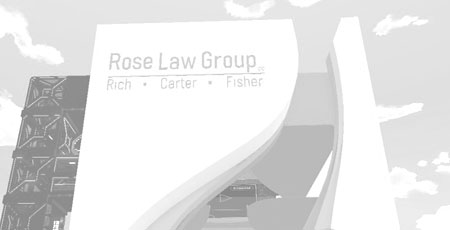
By Howard Meyers, Rose Law Group Of Counsel
I. ASSET PROTECTION DISTINGUISHED FROM PLAIN VANILLA ESTATE PLANNING
A. Estate Planning
Estate planning generally deals with the ordinary transmission of wealth by and between different family generations. While there are numerous tax planning and family considerations that are addressed, particularly as the amount of net worth involved increases, the main planning vehicle is inter Vivos (revocable) trusts that are characterized by the following attributes:
1. These revocable estate planning trusts are permeable. Assets can generally be moved in and out without any tax ramifications.
2. These estate planning trusts have no independent debtor-creditor significance. A creditor of the parents can proceed against assets titled in the name of the trust as if the trust did not exist.
3.Until defined events occur such as the death of a settlor(s) (usually the parents), these revocable estate planning trusts can be collapsed at any time.
4. These revocable estate planning trusts are self-administered without independent trustees. The settlor parents wear every hat. The settlor parents are “do it yourself” trustees and
they generally are the beneficiaries subject to contingent vesting in favor of children and
grandchildren with the contingent vesting being triggered by the death of one or both of the parents.
5. These estate planning trusts are not regarded as separate taxable entities. They do not have separate taxpayer-identification numbers nor do they file separate income tax returns.
6. The primary function of the parents’ wills are to serve as a “catch basin” for any assets owned at the time of death that did not get titled in the estate planning trust. Pour over provisions in the will provide that all such omitted assets will be transferred to the trust which is now locked in as an irrevocable trust by virtue of the occurrence of one or both of the parent’s deaths.
B. Asset Protection
Asset protection is to estate planning as military music is to music. Although many of the building blocks of asset protection appear on the surface to involve ordinary estate planning entities and techniques, the central goal of asset protection is to fence off assets from the reach of creditors for the benefit of the settlors and their beneficiaries. The principal building block of asset protection is the irrevocable trust. The settlor of the trust is the person who contributes the assets which serve as the body of the trust as held by the trustee. Although people tend to think of an irrevocable trust as a separate entity akin to a corporation or a limited liability company, a trust is simply a form of holding by the trustee pursuant to the terms of the trust agreement and is not per se considered a separate entity. Except for third party settlor created trusts (discussed infra), settlors are often also beneficiaries of the asset protection trust, together with other members of their families. Thus, it is convenient to use the term “settlor/beneficiary” as a form of shorthand. In contrast to estate planning, asset protection usually has the following attributes:
1. These irrevocable asset protection trusts are not permeable. Assets cannot generally be moved in and out without triggering tax ramifications.
2. These irrevocable asset protection trusts have independent debtor-creditor significance. A creditor of the settlor/beneficiary cannot generally proceed against assets titled in the name of the trust because of spendthrift provisions unless special circumstances occur and even then a more complex set of legal claims (usually fraudulent transfer and/or alter ego) need to be alleged and proven before the trust has liability. The spendthrift provisions and other trust provisions empower the trustee of the trust to make expenditures to support the lifestyle of the settlor/beneficiary even though the settlor/beneficiary is under attack by a creditor holding ajudgment or the governmental equivalent of a judgment (i.e. IRS levy).
3. These irrevocable asset protection trusts cannot generally be collapsed or undone.
4. These irrevocable asset protection trusts are more complex to administer although the statutory liberalization of Arizona’s trust code over the course of time have lessened the need for independent trustees (discussed infra).
5. These irrevocable estate planning trusts are sometimes regarded as separate taxable entities filing a Form 1041 return and can implicate higher effective income tax rates.
There are four main types of asset protection trusts. Some asset protection trusts contain features borrowed from more than type of asset protection trust. The four main types of asset protection trusts are as follows:
1. A spendthrift trust in which the interest of a beneficiary cannot be assigned by the beneficiary nor reached by the beneficiary’s creditors. his creditors.
2. A support and maintenance trust which limits payment to the beneficiary of only as much income as is required for the support, maintenance, and education of the beneficiary.
3. A discretionary trust, where a third-party trustee has sole discretion over disbursement. The trustee has the authority to refuse to make any disbursements to the
beneficiaries that would go towards resolution of a creditor’s claim.
4. A protective trust with a forfeiture clause. This trust can be seen as a hybrid of both the spendthrift and discretionary trusts. Upon a triggering event, any interest in the trust is forfeited by the beneficiary and reverts solely to the trustee, who then gains full discretion.
II. THE GENESIS OF ASSET PROTECTION
Dynastic families like the Rockefellers had long ago focused in on protecting family wealth from dissipation. However, most modern asset protection stems from efforts of counsel in Colorado and Texas circa 1980s to help high net worth individuals in such cyclical industries as oil and gas and real estate development to immunize some of their wealth from creditors when downturns occurred. The asset protection community also reached out to medical professionals
who were coping with what was perceived as a national malpractice crisis.
In Arizona, much of the early asset protection planning came as an outgrowth of estate planning for agricultural interests. The volatility of commodity prices exposed farmers to big year to year swings between operating profits and losses. The thrust of this early asset protection planning was to insulate land ownership from being threatened by claims arising from farming operations. There was more of a multi-generational thrust to this planning. Older parents held the safe asset farm land in trust and leased it to the next generation who assumed the financial risk of the farming operations.
III. THE END GAME OF ASSET PROTECTION IS TO MAKE THINGS AT LEAST “HARD” IF NOT IMPOSSIBLE FOR ADVERSE CREDITORS
There is a school of thought that even bad asset protection is good. If it appears to a creditor that it will be difficult to recover, this may inhibit litigation or promote a smaller settlement in the event of litigation. Under the best circumstances, asset protection can be totally effective and a creditor is forced to walk away with absolutely nothing. What usually makes asset protection “bad” is that it is undertaken after claims are known to exist (i.e. after a large lawsuit is filed). This makes the asset protection subject to the claim that the protection was undertaken to hinder, delay or defraud a creditor under the Arizona’s enactment of the Uniform Fraudulent Transfer Act or under federal law (i.e. the Federal Debt Collection Procedures Act which applies when the federal government is the creditor). CPAs and other professionals who are too hands on in implementing an asset protection plan after a claim is known to exist can get themselves in both ethical difficulties and legal
difficulties. Aiding and abetting fraudulent transfers can subject Arizona professional advisors including CPAs to the risk of liability.
Fraudulent transfers can also create exceptions to ordinary CPA-client privileges and duties of confidentiality with regard to discovery during litigation directed at asset protection planning and asset protection structures. This should be remembered anytime a CPA is creating documents, memoranda, emails, notes or correspondence with reference to a client who is experiencing financial difficulties.
IV. THE BUILDING BLOCKS OF ASSET PROTECTION PLANNING
One of the basic building blocks of asset protection is the irrevocable trust with spendthrift provisions. The trust objective is to immunize the assets of the trust and distributions from the trust from the reach of creditors of either (a) the settlors; and/or (b) the beneficiaries who often include the settlors.
In order for a trust to be irrevocable, the settlors have to give up title and control of assets to the designated trustee. In a well-known Arizona case, the Arizona Court of Appeals found that, even with an independent trustee, a self-settled trust would not be immune from creditor invasion if the settlor retained too much control or had the ability to receive the assets back in the future. In that case, the settlor (who was also a beneficiary) retained both (a) the power of approval with regard to any sale of the major trust asset (stock in a large financial institution); and (b) the power to determine when an emergency arose which created a situation wherein the corpus of the trust may be invaded.
The court was further struck by the fact that the trust further provided that if the settlor/beneficiary lived until August 25, 1970, the trust would be terminated and the trust assets distributed out to the settlor. This “parking” arrangement with too much retained control deprived the settlor and his family of the desired asset protection. Arizona Bank v. Morris, 6 Ariz. App. 566, 568, 435 P.2d 73, 75 (1967), modified, 7 Ariz. App. 107, 436 P.2d 499 (1968). One of the other historic basic building blocks of asset protection is an independent trustee. The independent trustee requirement is becoming less important as traditional statutory trust norms
are changing across the country.
Institutional fiduciaries like Northern Trust are costly and unwieldy. In response, over the course of time asset protection plans gravitated to individual independent trustees with “family trustees” (usually the settlor or close relatives). The problem with such lay trustees is a combination of a lack of discipline and a lack of propriety (i.e.) permitting trust beneficiaries to buy movie tickets with debit cards tied to trust financial accounts). Trusts created for asset protection often have designated “trust protectors” with the discretionary power to change trustees or to even amend the terms of the trust agreement.
The underlying concept is that the trust protector is a party upon whom the settlor relies to ensure that the settlor’s original trust intention and trust purpose is fulfilled in even changing circumstances. The trust protector is both a “watch dog” and an agent for redress if an independent trustee becomes too “independent” for the tastes of the settlor/beneficiary. When the “coast is clear” (no creditors are attacking), a lack of rigor on the part of lay trustees is of no consequence.
However, many lay trustees defer to the beneficiaries or the “family trustee” and have little day to day (or even year to year) involvement in trust financial affairs. This is particularly so when much of the trust’s financial activity is conducted by subsidiary limited liability companies which are owned by the trust but which have as their managers the settlor/beneficiary.
This lack of knowledge makes for some interesting depositions if there is creditor action. It yields pages and pages of “I don’t know(.)” in response to most, if not all, of the questions directed at the official designated lay trustee by counsel for a creditor. Care needs to be taken to ensure that anyone serving as a trustee of an asset protection trust maintains a state of knowledge and hands on involvement consistent with their designated fiduciary responsibilities under the trust.
No one who is incapable of appearing reasonably intelligent and informed in a deposition or court proceeding should seriously be considered for appointment as the trustee of an asset protection trust.
If the prospect of litigation surfaces and the incumbent trustee is “weak” as to knowledge and ability to present well and intelligently in a deposition or court proceeding, a the matter of a change of trustees should be brought up with the trust protector.
V. A NATIONAL SHIFT IN WHAT IS DEEMED PERMISSIBLE
As cyclical national downturns occurred over the course of time (i.e. the financial crisis of 2008), the concept of asset protection became more culturally acceptable, particularly because of the lobbying of the asset protection community which tends to be under the umbrella of the larger estate planning community.
As can be imagined, this has led to more permissiveness with regard to bending orthodox trust “theology” in many different ways. Historically, self-settled trusts that did not provide for an independent trustee were subject to easy attack. Thus, an independent trustee became a prerequisite for achieving asset protection. Similarly, trusts which included the settlor as a primary beneficiary were problematic.
One of the historic responses to these types of issues was to try to gravitate away from the self settled irrevocable trust model and to have a trust created by way of a gift from a third party (a parent, fraternity brother, etc.). For example, the donor contributes $10,000 as the settlor of a trust which names as the trustee the person for whose benefit the trust was created who (together with his or her family) are generally among the designated beneficiaries.
While $10,000 does not sound as if it is of financial consequence, this money can be used by the trust to form a creditor protected limited liability company that will engage in highly leveraged financial activities. Because asset protection is usually the reserve of persons of high past or present business achievement, such thinly capitalized limited liability companies can harness the significant human capital of such persons and create a significant inancial yield that can either be distributed as compensation for living expenses or “upstreamed” from the wholly-owned limited liability company to the trust.
Originally, asset protection was often directed towards the creation of offshore trust structures. Asset protection lawyers lobbied for legal changes in such remote jurisdictions as the Cook Islands and the Marshall Islands. Legislation was passed in these offshore havens that raised a very high bar for the easy recognition of foreign (i.e. U.S.) judgments and which prohibited trustees of trusts created under the laws of these jurisdictions from honoring court orders compelling the trust to pay over money or trust assets to foreign (i.e. U.S.) creditors.
Ingenuously, the proponents of offshore asset protection often hid behind the mantle of human rights. During the Nazi era, German Jews had created trusts in Switzerland to hold assets free from attack by the German government. These Swiss trusts had trust provisions directed at defeating a Nazi grab of assets through German court orders brought to Switzerland for enforcement.
The pioneering offshore asset protection lawyers copied these trust provisions in their authoring of the trust laws of these offshore island havens. In order to clothe their asset protection efforts with a more noble guise, these asset protection lawyers invoked the story of these German Jews fending off a Nazi grab of their Swiss trust assets. The simple “work around” to all of this offshore asset protection is to use both civil and criminal contempt of court procedures directed at the local settlor/beneficiary. Self-created impossibility of performance defenses did not go over very well (i.e. “I no longer have any control over this 160 acres because of Cook Island trust law.”). For example, in Federal Trade Commission v. Affordable Media, LLC, 179 F. 3rd 1228 (9th Cir. 1999), Denise and Michael Anderson were jailed for a number of months for contempt of court despite what they thought was a fool proof Cook Islands trust.
VI. THE RISE OF DOMESTIC ASSET PROTECTION TRUSTS WHICH DON’T CROSS STATE LINES WELL
The early attempts at this type of offshore asset protection failed to accommodate a central reality: domestic U.S. assets are still well within the jurisdiction of domestic U.S. courts regardless of their being titled in an offshore asset protection entity. Titling 160 acres of land located in Gilbert, Arizona, in the name of a Cook Island entity is not enough to deprive an Arizona judge of power over an Arizona settlor/beneficiary or the property itself.
Long before the IRS started scrutinizing any U.S. citizens who were beneficiaries of foreign trusts or held foreign accounts, many asset protection lawyers realized that offshore asset protection plans did not make sense for U.S. citizens who had no legitimate offshore economic profile (i.e. dual citizenship, etc.). Instead, asset protection lawyers began focusing more on using domestic irrevocable trusts which in turn would own equity interests in subsidiary business and/or investment entities. Because of the traditional American aversion to self-settled trusts in the context of debtor creditor law, asset protection interests moved from lobbying offshore to lobbying onshore. Sixteen states (although not Arizona) now give statutory recognition to Domestic Asset Protection Trusts (“DAPTs”) which incorporate many, but not all, of the features of offshore asset protection trusts. DAPT states tend to sanction self-settled trusts in which the settlor retains a beneficial interest in the trust.
Sometimes asset protection plans for residents of non-DAPT states like Arizona try to take advantage of DAPTs by organizing a trust in a DAPT state for the benefit of residents of a non DAPT state. As with much of offshore estate planning, these interstate DAPTS don’t always succeed.
In the case of In re Huber, 493 B.R. 798 (Bkrtcy. W.D. Wash. 2013), a Washington state resident created a self-settled Alaskan DAPT for the benefit of himself and his children. The debtor settlor was an MBA involved in real estate management and development for 40 years who was financially upside down at the time the Alaska DAPT was created because of guaranties related to the project financing for 13 real estate developments. This debtor settlor had several large guaranty suits brought against him by lenders as a result of the 2008 real estate crash. He formed the Alaskan DAPT in 2008 and immediately transferred all of his assets into the DAPT or its subsidiary entities.
The debtor settlor filed a chapter 11 bankruptcy in Washington in 2011 which was subsequently converted to a chapter 7 case in which a trustee was appointed. The bankruptc trustee filed an adversary case in the bankruptcy court (1) to set aside the prebankruptcy transfers into the trusts; and (2) to deny the debtor settlor a discharge in bankruptcy (thus making him liable to all of his preexisting creditors the same as if no bankruptcy proceeding had been filed). The bankruptcy trustee obtained summary judgment without a trial setting aside the transfers into various newly created business entities owned by the Alaskan DAPT. The court noted:
“There was only one asset of the Trust held in Alaska which is a certificate of deposit for $10,000 transferred there by the Debtor. All other assets are located in Washington State.” Id. at 805.
The basic asset protection plan was fairly typical. An Alaskan asset protection trust was created which in turn set up an Alaskan LLC owned by 99% by the trust and 1% by the debtor settlor who was the Alaskan LLC’s sole manager. The debtor settlor transferred $10,000 in cash and his ownership interest in over 25 entities into the Alaskan LLC. The debtor settlor’s Washington residence was conveyed to another Alaskan limited liability company (8310, LLC) and then into the Alaskan LLC. There was a lease of the residence between 8310, LLC as landlord and the debtor settlor and the Alaskan DAPT made the mortgage payments. There were some other transfers as well which are left out for the sake of brevity. The bottom line for the court was, “[T]he Debtor acknowledges that he received no consideration for the transfers.” Id. at 805.
In ruling against the debtor and holding that Washington law which “…has a strong public policy against self-settled asset protection trust(,)” and not Alaskan law should control the case result, the court found that the debtor settlor’s transfers to the Alaskan DAPT or its subsidiary entities should unquestionably be set aside because:
“..[I]t is undisputed that at the time the Trust was created, the Debtor resided in Washington, all of the property placed into the Trust, except a $10,000 certificate of deposit, was transferred to the Trust from Washington, the creditors of the Debtor were located in Washington, the Trust beneficiaries were Washington residents, and the attorney who prepared the Trust documents and transferred the assets into the Trust was located in Washington.” Id. at 808.
The court was further struck the fact that:
“Based on the evidence before the Court, the only reasonable conclusion is that the Debtor continued to use and enjoy the Trust assets just as he did before the transfers.” Id. at 813. The Huber case is an example of what happens when asset protection planning is both undertaken too late in the game and is too aggressive given the discrete factual circumstances. As extreme as the asset protection planning was in Huber,
the biggest tactical mistake made in that case was in filing for bankruptcy. Over the course of time, asset protection planners often tend to oversell the level of “bankruptcy proofing” in their asset protection plans. This is particularly so because “bankruptcy proofing” often depends on the passage of enough time for certain applicable federal and state statute of limitations to run. It has to be remembered that while in Arizona the Uniform Fraudulent Transfer Act has a four (4) year statute of limitations, the Federal Debt Collection Procedures Act gives the federal government a six (6) year statute of limitations and certain IRS and bankruptcy
statutes can functionally give the IRS or a bankruptcy trustee a ten (10) year statute of limitations.
The Bankruptcy Code also gives an arsenal of tools and remedies that are not available in the non-bankruptcy context. Similarly, in addition to adversarial creditors already in existence before bankruptcy, the filing of a bankruptcy creates a new “super adversary” in the form of a bankruptcy trustee who is conferred with powers far beyond that of any ordinary creditor. Under Section 544(a)-(c), the strong-arm provisions which cover three alternative hypothetical state law creditor statutes upon the trustee1, bankruptcy trustees can avail themselves of state-created avoidance powers in addition to federally created avoidance powers under the Bankruptcy Code.
If the IRS is a creditor, bankruptcy trustees can go back ten (10) years as noted above by in essence stepping into the shoes of the IRS and having the benefit of the IRS’s unique ten (10) year statute of limitations for avoidance purposes. If somebody goes down the asset protection path, they are
1 For example, a bankruptcy trustee has, as of the time of the commencement of the bankruptcy case, the status and rights and powers of a judgment creditor of the debtor whose judgment execution against the debtor was returned unsatisfied “whether or not such a creditor exists(.)” 11 U.S.C. § 544 (a)(2).
well advised to consider refraining from filing for bankruptcy lest they end up like the Huber family.
VII. THOUGHTFUL ASSET PROTECTION CAN WORK IF PROPERLY CONCEIVED AND EXECUTED
The hallmark of quality asset protection planning is that, if any CPA-client or attorney client privileges were set aside, the transactional documents, the correspondence, the notes and emails could be carefully scrutinized by a large adverse private or governmental creditor and there would be nothing they could do to successfully challenge the asset protection plan. This presupposes that there is no written indicia of intent to hinder, delay or defraud creditors. This also presupposes that the settlor/beneficiary and the trustee are following the asset protection plan with regard to their ongoing conduct of financial affairs.
Many lay people, even sophisticated ones, never properly understand how their asset protection plans work. Most asset protection lawyers have meaningful explanation sessions with their clients and hopefully their clients’ CPAs. Most asset protection lawyers also have great organization bubble charts which are intended to guide their clients.
Functionally, the penetration of how the asset protection is supposed to work is much lesser than anyone wants to admit. The more complex the asset protection plan, the more possibility of error. Unless a client has their CPA or a highly competent in house financial person (preferably both) who understands the architecture of the plan and who monitors the ongoing conduct of the plan, disconnects will occur. Unless and until a significant creditor comes to the surface, these disconnects will be of little practical consequence. But if a creditor challenge arises, these kinds of disconnects can be injurious.
In addition to properly understanding how their asset protection plans work, clients need to follow the asset protection philosophy of their plans. Most plans provide for a core central safe harbor entity (the hub) with subsidiary spokes (entities) radiating outward from the hub. The rationale is that any of the subsidiary spokes are expendable so long as the hub is not endangered. The settlor/beneficiary has to have the discipline to resist subjecting the safe harbor hub to financial jeopardy and risk. Excepting professional fiduciaries, the average independent trustee cannot say “no” to the settlor/beneficiary when the settlor/beneficiary wants to do a big deal and
needs the safe harbor hub to provide its financial guaranty or to become a co-maker on a financial obligation.
In point of fact, most settlor/beneficiaries specifically pick an “independent” trustee who is not independent enough to say “no” to them. Many times, the “independent” trustee is in some way financially subordinate to the settlor/beneficiary (i.e. an employee or another financially dependent of the settlor/beneficiary). of this reality, the independent counsel of a CPA is always a great plus. Somebody needs to remind both the settlor/beneficiary and the “independent” trustee not to do violence to the
asset protection plan by subjecting the safe harbor hub to financial jeopardy.
Practically speaking, there may be a need for the safe harbor hub to be voluntarily exposed to one large creditor, asset protection considerations notwithstanding. If the core business of the settlor/beneficiary requires a $10,000,000 bank credit facility year in and year out, transferring equity ownership of the core business from the settlor/beneficiary to a safe harbor entity is not going to keep the bank from asking for a guaranty from the safe harbor entity as the new equity holder in the place and the stead of the settlor/beneficiary as the old equity holder.
In addition, in all probability the settlor/beneficiary will be asked to remain as a guarantor in addition to the safe harbor entity. This exposure to one large creditor should not be considered a terminal road block to asset protection planning. The asset protection planning would still be effective as to everyone else. This in and of itself could justify going forward with the asset protection planning. Liability rears its head from both anticipated sources and unanticipated sources. Being in a protected position as
against all creditors except for the one major bank creditor is still a worthy objective. VIII. CONCLUSION Asset protection is a very valuable tool if properly explored and conceived. Unfortunately, many persons do not consider asset protection until after they become the target of substantial creditor claims.
While even at this late stage of the game there is much that can be done constructively, serious thought and restraint is required. In conclusion, the basic philosophical
approach for successful asset protection planning is well summarized by the following aphorism, which is well known in debtor-creditor legal circles “Pigs get fed and hogs get slaughtered.”




